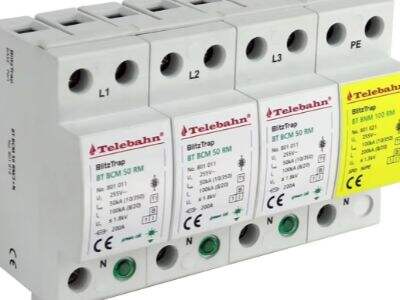Hello, everyone! Did you ever hear about a power surge? Power surges happen when electricity spikes suddenly and excessively over a brief period. This sudden surging of electricity can be extremely damaging to the electronics in your home. This means that things like your TV and computer, not to mention your smartphone, could be compromised. But don’t worry. There is a method to protect your most critical devices from these hazardous power surges. It’s called surge protector. Telebahn is here to pull back the curtain on surge protectors and when they're used.
The Importance of Surge Protection
We all are using lots of technology in the world today. We have similar electronic devices in our homes like TVs, computers, and smart phones which we depend on. They are wonderful machines but are often sensitive to large power variations. Because of this property, it can do serious harm to these devices. This is the reason you need surge protection in your home. Making the investment in surge protection helps keep your electronics safe and working longer. That implies less repairs and replacements, which can save you money over time.
How Surge Protectors Work
So how does a surge protector actually protect your gear? A surge protector is like a guard that keeps extra electricity from getting to your electronic devices. This helps prevent excess electricity from reaching your devices — when a power surge occurs, the surge protector sends excess electricity to the ground. It is kind of like a shield that keeps your devices safe. Since its job is to “absorb” the extra voltage, a surge protector ensures your precious electronics aren’t fried. In this way, in case of sudden electricity, your device will be protected and not damaged.
What Causes Power Surges?
You may wonder what creates these power surges in the first place. Power surges can be caused by a number of reasons. The most common causes include a lightning strike on the building, power outages and electrical system trouble. Lightning strikes is one of the major sources of power surges. Even if bolts strike several miles away from your residence, it could still send a surge of electricity through electricity lines. Even if there is a small issue in the electrical grid, it causes a change in voltage, which can also trigger a power surge. Power surges can cause serious damage to your electronic devices, wear them down faster and even cause a fire in some cases. That’s why knowing how to protect your devices is very important.
How to Protect Your Devices
Now that we’ve discussed the threats of power surges and how surge protectors operate, let’s talk about how you can actually protect your devices. First, choose a surge protector that is the right type for the job. Physical and component-based surge protectors are the two most common types of surge protectors. Physical surge protectors are typically power strips that you can connect multiple devices to and are meant to protect both private and commercial equipment, while component-based surge protectors are designed specifically for protecting several electronic devices, for example, your computer or gaming console.
When searching for a surge protector, be sure to note its joules rating. The joule rating indicates how much energy the surge protector is designed to absorb. A higher joule rating means better protection for your devices. A surge protector with an indicator light is also recommended. That light will indicate whether the surge protector is functioning properly and protecting your devices or not. It’s an easy way of ensuring that you’re perpetually safe.

 EN
EN
 AR
AR
 BG
BG
 HR
HR
 CS
CS
 DA
DA
 NL
NL
 FI
FI
 FR
FR
 DE
DE
 EL
EL
 HI
HI
 IT
IT
 JA
JA
 KO
KO
 NO
NO
 PL
PL
 PT
PT
 RO
RO
 RU
RU
 ES
ES
 SV
SV
 CA
CA
 TL
TL
 IW
IW
 ID
ID
 LV
LV
 LT
LT
 SR
SR
 SK
SK
 SL
SL
 UK
UK
 VI
VI
 SQ
SQ
 ET
ET
 GL
GL
 HU
HU
 MT
MT
 TH
TH
 TR
TR
/images/share.png)
